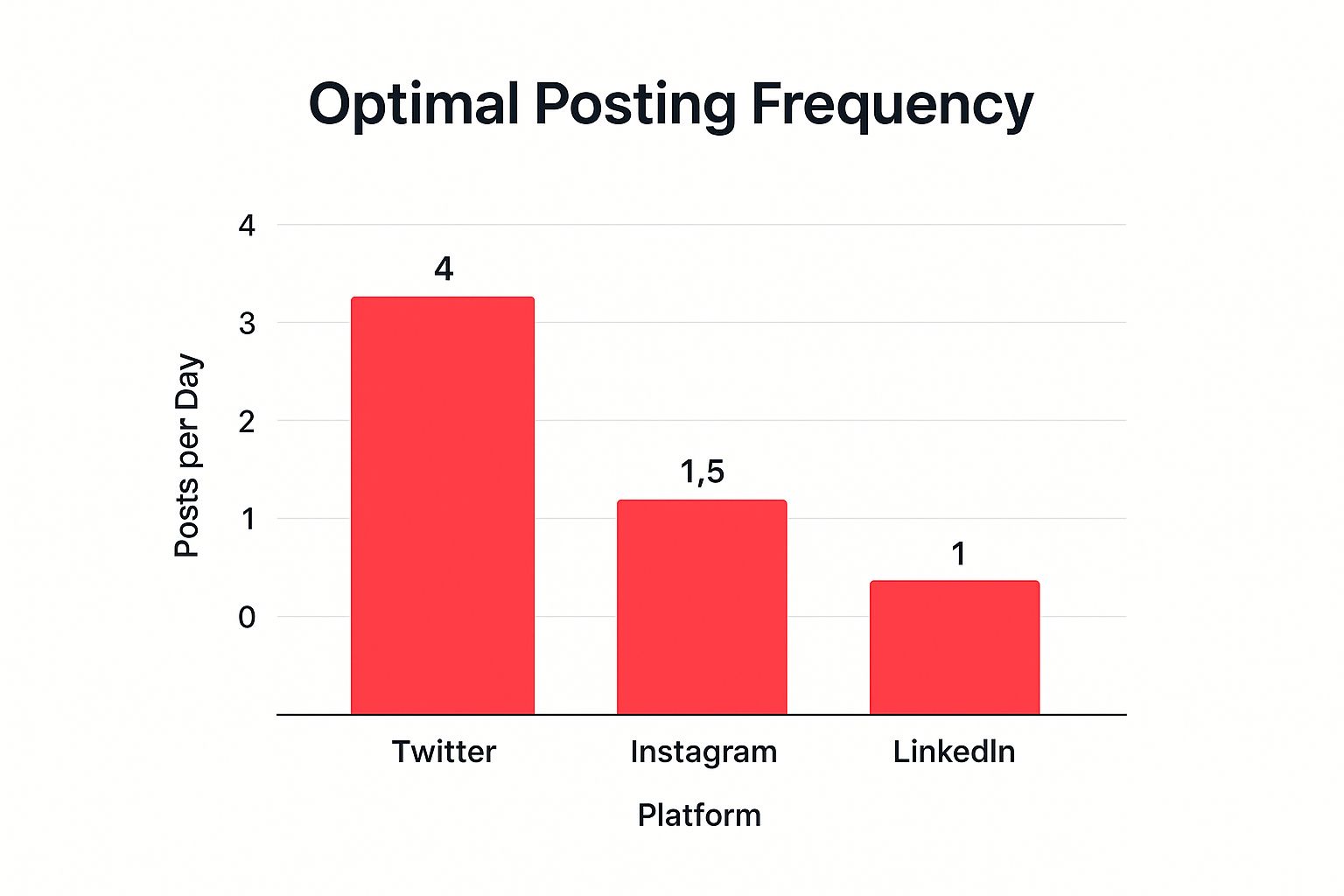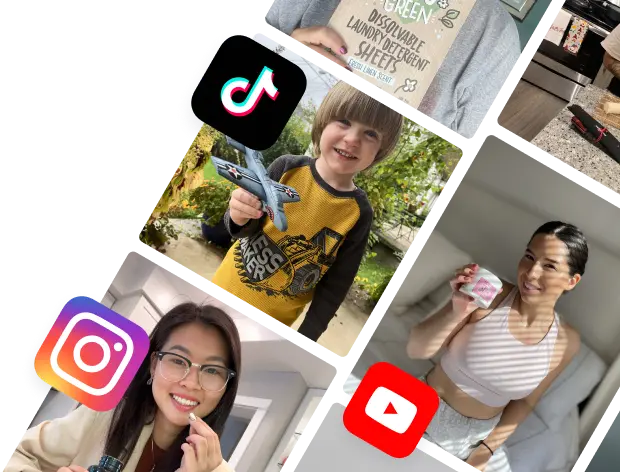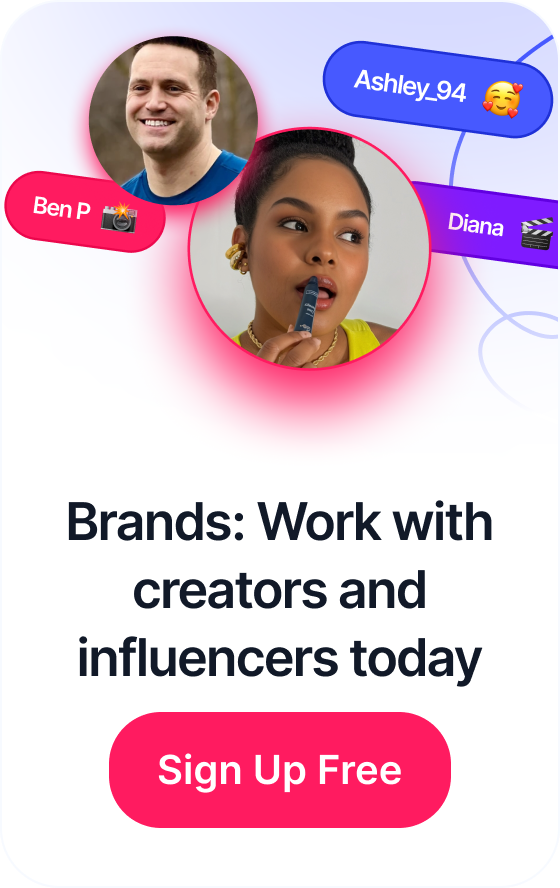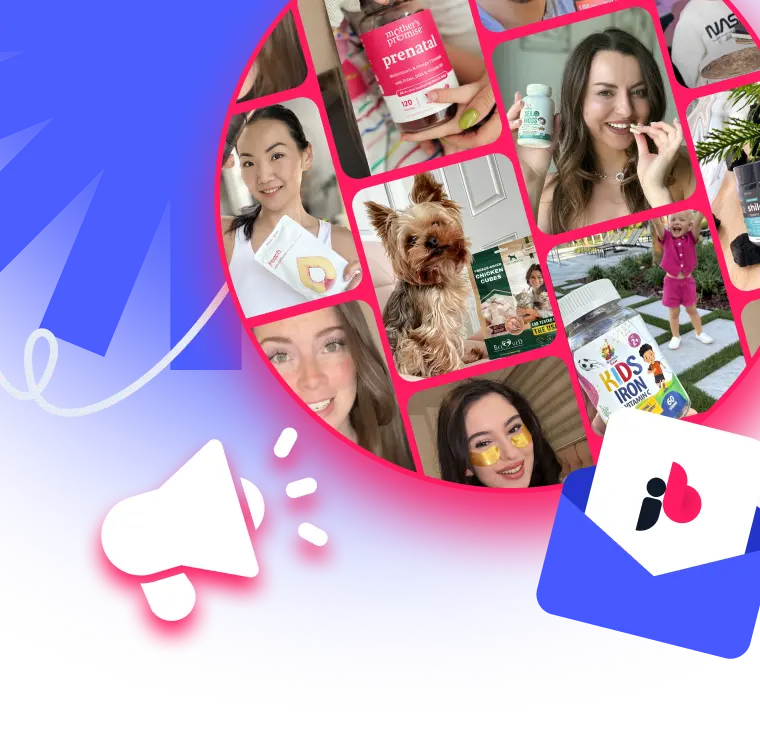 A Guide to the Calculation of CPM in Digital Ads
A Guide to the Calculation of CPM in Digital Ads
In the crowded digital marketplace, simply posting on social media is no longer a viable strategy. For direct-to-consumer (DTC) and e-commerce brands, social channels have transformed from basic marketing platforms into dynamic, shoppable ecosystems. Thriving in this environment demands more than a passive presence; it requires a sophisticated, data-driven, and genuinely authentic approach to connect with consumers where they discover, engage, and purchase.
This guide moves beyond generic advice to deliver nine essential social media marketing best practices tailored for high-growth brands and the agencies that support them. We will provide a clear, actionable framework to help you navigate the complexities of social commerce and turn passive followers into a community of loyal advocates. You will learn precisely how to refine your content strategy, prioritize meaningful engagement, and integrate user-generated content to build trust and drive conversions.
Each point is designed for immediate implementation, offering practical steps to enhance your social media performance. Whether you are managing campaigns in-house or leveraging a creator marketing platform like JoinBrands to scale your efforts, these insights will equip you with the necessary tools. Forget the vanity metrics and focus on what truly matters: building a resilient brand and accelerating sales through a smarter, more intentional social media marketing strategy. Let's dive into the practices that define success today.
Table of Contents
1. Develop a Data-Driven Content Strategy
Moving beyond intuition and guesswork is the first step toward building an effective social media presence. A data-driven content strategy involves using audience insights, performance metrics, and analytics to inform every decision you make, from the type of content you create to the time you publish it. This approach ensures your efforts are aligned with what your audience actually wants, maximizing engagement and ROI.
By analyzing what resonates with your followers, you can systematically refine your approach. This is one of the most crucial social media marketing best practices because it transforms your content creation process from a creative gamble into a calculated, strategic operation. It allows you to consistently deliver value, build a loyal community, and achieve tangible business objectives.
Why It Works
Data provides objective feedback on your content's performance. For instance, Spotify’s annual "Wrapped" campaign is a masterclass in this approach. It leverages individual user listening data to generate personalized, highly shareable graphics that go viral every year. Similarly, Airbnb uses booking and search data to create location-specific content guides that directly appeal to travelers' interests, driving both engagement and conversions.
How to Implement It
Getting started with a data-driven strategy is more accessible than it sounds. You don't need expensive tools right away; native platform analytics offer a wealth of information.
- Identify Key KPIs: Start by defining 3-5 key performance indicators (KPIs) that align with your business goals. These could include engagement rate, click-through rate (CTR), conversion rate, or audience growth.
- Establish a Reporting Routine: Dedicate time each month to review your analytics. Look for trends in top-performing posts, optimal posting times, and audience demographics. This routine helps you understand what’s working and what isn’t.
- Test and Refine: Use an 80/20 approach. Allocate 80% of your efforts to content formats and topics that have proven successful. Use the remaining 20% to experiment with new ideas, testing one variable at a time (e.g., video vs. image, question vs. statement in captions) to gather clean data.
By consistently analyzing performance and adjusting your plan, you create a powerful feedback loop that steadily improves your results. To go even deeper, you can explore how to use data for future planning. Find out more by reading about the role of predictive analytics in marketing.
2. Prioritize Authentic Engagement Over Vanity Metrics
Chasing high follower counts and likes can feel productive, but these vanity metrics often fail to translate into business results. Authentic engagement, on the other hand, focuses on building genuine relationships through meaningful interactions. This involves responding to comments, initiating conversations, and fostering a true community around your brand.
This is a cornerstone of modern social media marketing best practices because it shifts the focus from passive viewership to active participation. By prioritizing quality interactions over raw numbers, you build brand loyalty, gather valuable customer feedback, and create a base of advocates who will champion your products organically.

Why It Works
Meaningful engagement creates an emotional connection that vanity metrics cannot capture. For example, Wendy's legendary Twitter presence isn't built on follower count alone; it’s built on witty, personalized responses that turn followers into fans. Similarly, the pet supply company Chewy.com generates immense goodwill and viral user-generated content by sending hand-painted pet portraits to customers, a deeply personal gesture that fosters incredible loyalty.
How to Implement It
Building an authentic engagement strategy requires a commitment to being present and human. It’s about showing up for your audience consistently and making them feel heard.
- Establish Response Guidelines: Set a clear goal for response times (e.g., under 2 hours during business hours) and develop a brand voice that is personable, not corporate. This ensures consistency and lets your audience know you're listening.
- Encourage Dialogue: Don't just post and ghost. Ask open-ended questions in your captions, run polls, and create content that invites your audience to share their opinions and experiences. Make your social feed a two-way street.
- Celebrate Your Community: Actively seek out and showcase user-generated content (UGC). Reposting customer photos or stories is one of the most powerful ways to show appreciation and make your followers feel like valued members of your brand community. This social proof also builds trust with potential new customers.
By making genuine connection your primary goal, you transform your social channels from broadcast platforms into vibrant communities. To take this further, you can learn how to leverage these relationships through creator collaborations. Explore how to find the right partners by reading about finding influencers for your brand.
3. Create Platform-Specific Content (Not Cross-Posting)
Treating each social media platform as a unique channel rather than a content dumping ground is fundamental to success. Platform-specific content involves tailoring your format, style, and messaging to each network's distinct culture, features, and audience expectations. This strategy moves beyond one-size-fits-all cross-posting and acknowledges that users on LinkedIn behave differently than users on TikTok.
Adapting your approach for each platform is one of the most impactful social media marketing best practices because it respects the user experience. By aligning with native behaviors and content preferences, your brand appears more authentic, knowledgeable, and relevant. This thoughtful customization leads to significantly higher engagement, builds stronger community connections, and ultimately drives better business results.

Why It Works
Every platform has its own unwritten rules and content norms. A professional case study thrives on LinkedIn but would feel out of place on TikTok. For example, Ryan Reynolds' Aviation Gin brilliantly adapts its tone, using witty, short-form threads on Twitter, cinematic-style videos on Instagram, and professional partnership announcements on LinkedIn. Similarly, Red Bull shares polished, long-form extreme sports documentaries on YouTube while using Instagram Reels for quick, adrenaline-fueled clips.
How to Implement It
Mastering platform-specific content is about smart repurposing, not creating entirely new campaigns for each channel. You can efficiently adapt a core message for different audiences and formats.
- Map Your Platforms: Create a simple matrix that outlines the primary content format, audience mindset, and brand voice for each of your channels. For instance: Instagram for visual storytelling, Twitter for real-time conversation, and LinkedIn for industry leadership.
- Repurpose, Don't Re-Post: Take a central content idea and reformat it. A long-form blog post can become an insightful LinkedIn article, a shareable Twitter thread with key takeaways, and a visually engaging Instagram carousel. This maximizes the value of your core content.
- Adapt to Native Features: Lean into the unique features of each platform. Use vertical video (9:16 aspect ratio) for TikTok, Instagram Stories, and Reels. Leverage LinkedIn polls to engage a professional audience and Twitter Spaces for live audio conversations.
By strategically tailoring your content, you demonstrate a deep understanding of each community, making your brand a welcome participant rather than an intrusive advertiser. For brands working with creators, this principle is key to authentic collaborations, which you can learn more about by exploring how to find Instagram influencers who understand their platform's culture.
4. Leverage Video and Visual Storytelling
In a world of infinite scrolling, static images are no longer enough to capture attention. Leveraging video and visual storytelling means prioritizing dynamic, motion-based content as the cornerstone of your social media presence. This approach recognizes that video consistently outperforms other formats in engagement, reach, and conversion, as platforms like Instagram and TikTok continue to prioritize it in their algorithms.
Adopting a video-first mindset is one of the most impactful social media marketing best practices for any brand today. It allows you to convey personality, demonstrate product value, and build a human connection far more effectively than a simple photo. Video transforms your feed from a static catalog into an engaging, narrative-driven experience that stops the scroll and holds viewer attention.
Why It Works
Video content stimulates multiple senses, making it more memorable and emotionally resonant than text or images alone. For example, Duolingo’s TikTok account uses its mascot in humorous, short-form videos to engage a younger audience, amassing millions of followers and becoming a cultural phenomenon. Similarly, Tasty (by Buzzfeed) revolutionized food content with its iconic top-down, fast-paced recipe videos, generating billions of views and building a massive global community.
How to Implement It
You don't need a Hollywood budget to succeed with video; authenticity often resonates more than high production value. Getting started is straightforward with a smartphone and a clear plan.
- Hook Viewers Immediately: The first three seconds are critical. Start with a strong visual, a compelling question, or a surprising statement to prevent users from scrolling past.
- Design for Sound-Off Viewing: A staggering 85% of social media videos are watched without sound. Always add clear, easy-to-read captions to ensure your message lands, regardless of the viewing context.
- Embrace Short-Form Content: For platforms like TikTok and Instagram Reels, keep videos under 60 seconds. Use trending audio and formats to increase discoverability and tap into ongoing conversations.
- Batch and Repurpose: Maximize efficiency by batch-recording multiple videos in one session. You can also repurpose longer content, like a webinar or YouTube video, into dozens of short, shareable clips for different platforms.
By prioritizing video, you align your strategy with both user behavior and platform algorithms, setting your brand up for significant growth. To take your video skills to the next level, you can discover strategies for how to create viral content. Learn more about the elements that make content shareable.
5. Implement Consistent Brand Voice and Visual Identity
In a crowded digital landscape, recognition is everything. Implementing a consistent brand voice and visual identity ensures your content is instantly identifiable, whether it appears in a newsfeed, a story, or a sponsored ad. This practice involves creating a cohesive brand personality, tone, and aesthetic that remains uniform across all platforms and content formats.
By establishing and adhering to clear guidelines, you build strong brand recall and foster a sense of reliability and trust with your audience. This is one of the most fundamental social media marketing best practices because it transforms disparate posts into a unified brand experience. It ensures that every piece of content, from a Tweet to a TikTok video, works together to reinforce who you are and what you stand for.
Why It Works
Consistency creates familiarity, and familiarity builds trust. Consider Innocent Drinks, whose quirky, friendly, and slightly self-deprecating tone is consistent across their website, packaging, and social media. This unique voice makes their content immediately recognizable and relatable. Similarly, Nike’s "Just Do It" ethos permeates every post with motivational, action-oriented messaging and powerful visuals, reinforcing its core brand identity at every touchpoint.
How to Implement It
Creating a consistent brand presence is a deliberate process that requires clear documentation and team-wide alignment. You can start by establishing a foundational brand guide.
- Create a Brand Style Guide: Document everything. Include your brand’s mission, values, voice examples, color codes (HEX, RGB), and font specifications. Define your brand as if it were a person, outlining its personality and communication style.
- Use Design Templates: Leverage tools like Canva or Adobe Express to create a suite of pre-approved templates for different post types (e.g., quotes, promotions, testimonials). This ensures visual consistency even when different team members are creating content.
- Establish Content Pillars: Define 3-5 core themes or content pillars that align with your brand values and audience interests. Every post should fit into one of these pillars, ensuring your messaging remains focused and on-brand.
- Train and Audit: Ensure every team member and creator is trained on your brand guidelines before they start. Conduct a quarterly audit of all social channels to check for inconsistencies and realign your efforts.
By setting these standards, you empower your team to create content that is both creative and cohesive, strengthening your brand identity with every post. For more on building a memorable brand, explore how to create a brand identity for your business.
6. Embrace User-Generated Content (UGC)
Actively encouraging and sharing content created by your customers is a powerful way to build trust and community. User-Generated Content (UGC) involves leveraging authentic photos, videos, and testimonials from your audience rather than relying solely on polished brand assets. This approach provides valuable social proof, demonstrating that real people love and use your products.
By transforming customers into brand advocates, you build a more authentic and relatable presence. This is one of the most effective social media marketing best practices because it outsources content creation to your most passionate fans, generating a steady stream of credible marketing material that resonates far more deeply than traditional advertising. It reduces your creative burden while amplifying your message organically.
Why It Works
UGC acts as a powerful, modern-day word-of-mouth recommendation. It builds trust by showcasing real-world applications and genuine satisfaction. For instance, GoPro’s entire content strategy was built on thrilling user-submitted adventure videos, creating an endless library of authentic, high-octane content. Similarly, Apple's iconic "Shot on iPhone" campaign turns customer photos into global advertisements, celebrating user creativity and highlighting the product’s camera quality in an authentic way.
How to Implement It
Integrating UGC into your strategy is straightforward and highly impactful. The key is to make it easy and rewarding for your community to participate.
- Create a Branded Hashtag: Develop a unique and memorable hashtag for your campaign (e.g., #RedCupContest by Starbucks). Promote it across your bio, posts, and even on your product packaging to encourage submissions.
- Request Permission and Give Credit: Always ask for permission before reposting a customer's content. Once approved, give proper credit by tagging the original creator in both the photo and the caption. This fosters goodwill and encourages more submissions.
- Incentivize Participation: Encourage users to share their content by running contests, offering discounts, or featuring top submissions in a regular "Customer Spotlight." This recognition makes participants feel valued and motivates others to join in.
By systematically curating and celebrating customer content, you create a virtuous cycle of engagement and loyalty. To fully understand its impact, you can explore all the benefits of user-generated content.
7. Utilize Social Listening and Monitor Brand Mentions
Engaging with your audience means more than just responding to comments and direct messages. Social listening involves proactively tracking conversations about your brand, competitors, and industry across social media to uncover invaluable insights. This goes beyond simple notifications by catching untagged mentions and broader discussions, allowing you to understand public sentiment, identify opportunities, and manage your reputation in real time.
This proactive approach transforms social media from a broadcast channel into a two-way intelligence tool. Actively listening is one of the most powerful social media marketing best practices because it provides an unfiltered view of what customers truly think. It enables you to address concerns before they escalate, capitalize on emerging trends, and gather authentic feedback to improve your products and services.
Why It Works
Social listening provides raw, honest feedback that focus groups and surveys often miss. For example, JetBlue Airways famously monitors Twitter for travel-related complaints, often swooping in to offer solutions to frustrated travelers, even those flying with competitors. This builds immense goodwill and brand loyalty. Similarly, Xbox Support uses social listening as a primary customer service channel, resolving technical issues so effectively that it has become a celebrated example of proactive brand management.
How to Implement It
You can begin social listening without investing in expensive software. Native platform search functions and free tools can provide a strong foundation for monitoring relevant conversations.
- Track Key Conversations: Set up alerts and saved searches for your brand name (with and without the '@' symbol), common misspellings, product names, and key executives. Also, monitor competitor names and relevant industry keywords.
- Establish a Response Workflow: Create a clear process for handling different types of mentions. Decide who responds, what the tone should be, and when a conversation should be moved to a private channel like email or DMs for resolution.
- Analyze Sentiment and Trends: Regularly review the overall sentiment (positive, negative, neutral) associated with your brand. Look for recurring themes or questions, as these can highlight opportunities for new content, product improvements, or FAQs. This analysis is crucial for measuring brand health over time.
By systematically listening and engaging, you can turn passive mentions into meaningful relationships and strategic insights. To scale these efforts, especially for influencer discovery, a dedicated platform can help you identify and connect with creators who are already talking about your niche. Learn more about how to find the right creators for your brand and amplify your message.
8. Optimize Posting Timing and Frequency
Publishing great content is only half the battle; ensuring it reaches your audience at the right moment is just as critical. Optimizing your posting timing and frequency involves strategically scheduling content when your audience is most active and engaged. This practice requires balancing platform algorithms, audience behavior, and content quality to maximize visibility without causing follower fatigue.
By aligning your posting schedule with your audience's habits, you dramatically increase the chances of your content being seen and interacted with. This is a fundamental social media marketing best practice because it turns your content calendar into a precision tool. It ensures your valuable content doesn't get lost in the feed, allowing you to capture attention and drive meaningful engagement.
Why It Works
Different audiences are active at different times, and platform algorithms favor timely, relevant content. For example, a B2B SaaS company will likely find LinkedIn engagement peaks from Tuesday to Thursday between 9 AM and 11 AM in their audience's local time zone. In contrast, a direct-to-consumer fashion brand may see the highest engagement on Instagram from Wednesday to Friday evenings, as users browse for weekend inspiration. Timing your posts for these peak windows directly impacts reach.
How to Implement It
Finding your brand's unique sweet spot for posting requires a mix of general knowledge and specific audience data. Use your platform's native analytics as a starting point.
- Analyze Audience Activity: Use Instagram Insights or Facebook Analytics to identify the days and hours your followers are most active. Start by testing posts during these peak times.
- Establish a Baseline Frequency: Begin with a consistent, manageable schedule based on platform norms. The bar chart below shows a general starting point for optimal daily posting frequency across key platforms.
- Test and Measure: Dedicate 2-4 weeks to testing different time slots. Post the same type of content at various times on different days and track engagement rates. This will reveal your audience's specific patterns.
- Schedule for Efficiency: Use scheduling tools to publish content during non-working hours or across different time zones without being tied to your device. However, always leave room for spontaneous, real-time posts.
The following chart illustrates a common baseline for daily posting frequency on major platforms.

This data shows that platforms like Twitter favor a higher volume of content, while LinkedIn and Instagram perform better with fewer, more high-impact posts. To ensure your content reaches its maximum audience potential, it's vital to consider optimal posting schedules. Learn more about the Best Time to Post on Social Media in 2025.
9. Invest in Paid Social Advertising Strategically
As organic reach on social media platforms continues to decline, complementing your content strategy with paid advertising is no longer optional; it's essential for growth. Paid social advertising involves strategically allocating a budget to targeted ad campaigns, allowing you to amplify your message, reach specific audiences beyond your followers, and drive measurable business outcomes like leads and sales.
This approach allows you to break through the noise and overcome algorithmic limitations. Investing in paid ads is one of the most impactful social media marketing best practices because it provides a direct, scalable way to get your best content in front of the right people at the right time. It transforms your social media channels from simple community hubs into powerful customer acquisition engines.
Why It Works
Paid advertising offers unparalleled targeting capabilities that organic efforts can't match. For example, Gymshark famously used influencer-generated content in highly targeted Instagram and Facebook ads to scale from a small startup to a billion-dollar brand. Similarly, Casper, the mattress company, used sophisticated Facebook retargeting ads to nurture leads who had visited their website, successfully converting high-consideration shoppers into customers.
How to Implement It
An effective paid social strategy focuses on precision and continuous optimization, not just a large budget. You can start small and scale intelligently as you gather data.
- Install Tracking Pixels First: Before spending a single dollar, ensure the Meta Pixel (for Facebook/Instagram) and TikTok Pixel are installed on your website. This is crucial for tracking conversions, building retargeting audiences, and optimizing your campaigns for actual business results.
- Start with a Test Budget: Allocate a small daily budget ($10-$20) to test different ad creatives, audiences, and messaging. This minimizes risk while allowing you to identify winning combinations before scaling your ad spend.
- Optimize for Conversions: When your goal is sales, always choose the "Conversions" or "Sales" objective in your campaign setup. Optimizing for "Traffic" or "Engagement" will get you clicks and likes, but it won't effectively train the algorithm to find people who are likely to buy.
- Leverage Lookalike Audiences: Once you have sufficient customer data, create Lookalike Audiences. These are groups of users that platform algorithms identify as being similar to your best existing customers, providing a highly effective way to find new, qualified leads.
Social Media Marketing Best Practices Comparison
| Strategy | Implementation Complexity 🔄 | Resource Requirements ⚡ | Expected Outcomes 📊 | Ideal Use Cases 💡 | Key Advantages ⭐ |
|---|---|---|---|---|---|
| Develop a Data-Driven Content Strategy | Moderate to High: requires analytics tools and expertise | Data analytics tools, skilled analysts, time-consuming | Improved ROI, refined content based on data, trend responsiveness | Brands with sufficient data and analytics capacity | Maximizes ROI, reduces guesswork, enables continuous improvement |
| Prioritize Authentic Engagement Over Vanity Metrics | High: intensive daily interaction and community management | Significant time, dedicated community managers | Strong brand loyalty, meaningful engagement, organic brand advocacy | Brands focused on long-term community building | Builds loyal communities, increases customer satisfaction, improves algorithmic visibility |
| Create Platform-Specific Content (Not Cross-Posting) | High: complex content planning across platforms | Multi-skilled team familiar with platform nuances | Higher native engagement, better algorithm ranking | Brands targeting diverse audiences on multiple platforms | Higher engagement rates, platform rewards native content, respects community culture |
| Leverage Video and Visual Storytelling | Moderate to High: requires video production skills | Video equipment, editing skills, content creators | Increased engagement and conversions, strong emotional connections | Brands seeking high engagement via rich media | Generates more engagement, builds emotional ties, favored by platform algorithms |
| Implement Consistent Brand Voice and Visual Identity | Moderate: needs upfront brand development and maintenance | Brand guidelines, design tools, training | Strong brand recognition, cohesive presence | Brands aiming for distinct, professional identity | Increases recognition, builds trust, simplifies creation, differentiates brand |
| Embrace User-Generated Content (UGC) | Moderate: requires curation and legal permissions | Community engagement, legal oversight, management tools | Authentic social proof, reduced content costs, stronger community bonds | Brands leveraging customer advocacy and testimonials | Highly influential content, cost-effective, boosts engagement and loyalty |
| Utilize Social Listening and Monitor Brand Mentions | Moderate to High: depends on tools and analysis resources | Social listening tools, dedicated monitoring team | Proactive crisis management, insightful customer feedback | Brands needing competitive intelligence and reputation management | Early issue detection, product insights, identifies advocates and opportunities |
| Optimize Posting Timing and Frequency | Low to Moderate: involves scheduling and testing | Scheduling tools, analytics access | Increased visibility and engagement, improved workflow | Brands wanting to maximize reach without spamming | Boosts engagement rates, builds audience habits, improves algorithm performance |
| Invest in Paid Social Advertising Strategically | High: requires budget, strategic targeting, campaign management | Paid advertising budget, ad managers, tracking tools | Rapid growth, measurable ROI, precise audience targeting | Brands needing to amplify organic reach and drive conversions | Overcomes organic decline, precise targeting, scalable growth, measurable ROI |
Turning Best Practices into Brand Performance
The journey through the landscape of social media marketing best practices reveals a fundamental truth: success is not about finding a single magic bullet. Instead, it's about building a resilient, strategic framework that adapts to the ever-shifting digital environment. The nine practices we've explored, from developing a data-driven content strategy to investing wisely in paid advertising, are the core pillars of this framework. They represent a move away from passive broadcasting and toward active community-building and measurable growth.
Mastering these concepts requires a commitment to a new mindset. It means valuing authentic engagement over inflated vanity metrics and understanding that a piece of content that thrives on TikTok will likely falter on LinkedIn. It’s about recognizing that your brand's voice and visual identity are not just aesthetic choices; they are the bedrock of brand recognition and trust. By embracing user-generated content and diligently practicing social listening, you transform your social media from a monologue into a dynamic, two-way conversation that fuels loyalty and provides invaluable market insights.
From Checklist to Integrated Strategy
The real power of these practices is unlocked when they are integrated, not just checked off a list. Your data should inform your content, your content should reflect your brand voice, and your paid strategy should amplify your best-performing organic posts and UGC. This interconnected approach creates a powerful flywheel effect where each element strengthens the others.
Consider the synergy between these key takeaways:
- Authenticity as the Ultimate Metric: Prioritizing genuine interactions and user-generated content creates a loyal community that trusts your brand. This trust is the foundation for long-term customer relationships.
- Platform-Native Content is Non-Negotiable: Respecting each platform's unique culture and algorithm by creating tailored content is the difference between being an interesting guest and an annoying intruder.
- Data Illuminates the Path Forward: A commitment to analytics ensures you're not just guessing. It allows you to double down on what works, pivot from what doesn't, and consistently optimize for performance.
Implementing these social media marketing best practices is how you turn your social channels into predictable, scalable growth engines. While it's a complex process, the goal is to create a system that consistently delivers results, engages your target audience, and ultimately drives revenue. While not every post will be a blockbuster, understanding the principles behind how to create viral content can provide a significant boost, turning a single well-crafted piece of content into a major brand awareness event.
Ultimately, this guide is your blueprint. It's time to move beyond the basics and embrace the strategies that top-tier DTC brands and agencies use to dominate their niches. Audit your current approach, identify the gaps, and start implementing these actionable principles one by one. The consistency and dedication you apply today will directly translate into the brand performance, community loyalty, and business growth you achieve tomorrow.
Ready to scale your content strategy with authentic UGC? JoinBrands provides the platform to connect with over 250,000 creators, streamlining your campaign management and ensuring a consistent flow of high-quality content. Stop searching for creators and start building powerful campaigns at JoinBrands today.








